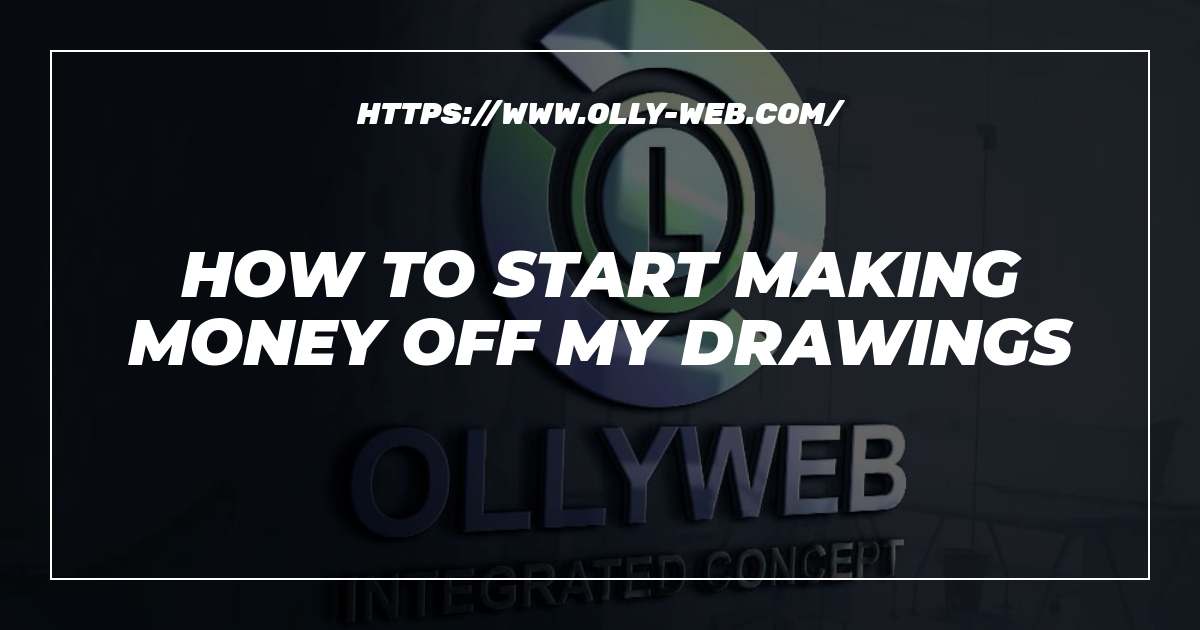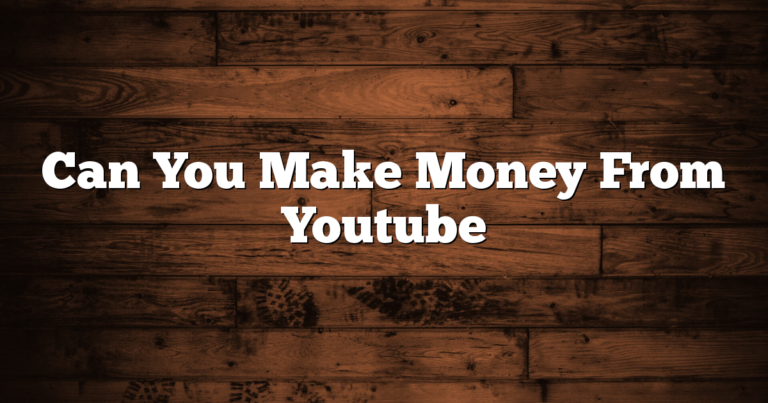How To Start Making Money Off My Drawings

Hey there, fellow art enthusiasts! Are you tired of your incredible drawings just sitting in your sketchbook, collecting dust? Well, it's time to brush off those artistic skills and start turning your passion into cold, hard cash. That's right, we're about to dive into the exciting world of making money off your drawings. Whether you're a doodling prodigy or a master of intricate illustrations, this article is here to guide you on your journey to artistic success. So grab your pencils, unleash your creativity, and let's get ready to make some moolah!
Finding Your Niche
So, you're on the hunt for your niche, huh? Well, let me tell you, finding your niche is like finding your own little corner of the world where you can truly shine. It's all about discovering what makes you unique and using that to your advantage. And trust me, once you find it, you'll feel like you've hit the jackpot.
Now, let's dive into the nitty-gritty of finding your niche. First things first, you gotta do some soul-searching. Take a moment to reflect on your passions, interests, and skills. What gets you excited? What could you talk about for hours on end? What are you really good at? These are the questions you need to ask yourself to uncover your true calling.
Once you've got a good idea of what makes you tick, it's time to do some market research. Look around and see what's already out there. Is there a gap in the market that you could fill? Is there a demand for something that aligns with your interests and skills? This is where you can really start to narrow down your niche and find your sweet spot.
Now, here comes the fun part – experimenting and refining. Don't be afraid to try different things and see what works for you. Test the waters, see how people respond, and make adjustments along the way. Finding your niche is a journey, and it's all about finding that perfect balance between what you love and what the world needs. So go out there, explore, and don't settle until you've found your niche.
Identifying Your Target Audience
So, you want to know how to identify your target audience, huh? Well, let me break it down for you. Identifying your target audience is like finding your tribe, your people, the ones who will truly appreciate what you have to offer. It's all about understanding who your product or service is meant for and tailoring your marketing efforts to reach them.
First things first, you need to do some serious detective work. Start by gathering as much information as you can about your current customers. Look at their demographics, their interests, their buying habits. This will give you a good starting point to figure out who your target audience might be. You can even create customer personas to help you visualize who your ideal customers are.
Once you have a general idea of who your target audience might be, it's time to dig deeper. Get out there and do some market research. Talk to people, conduct surveys, and analyze data. Find out what makes your potential customers tick, what problems they're facing, and how your product or service can solve those problems. This will help you refine your target audience and create a more targeted marketing strategy.
Now that you have a clear picture of who your target audience is, it's time to put your findings into action. Craft your marketing messages in a way that speaks directly to your target audience. Use their language, address their pain points, and show them how your product or service can make their lives better. And don't forget to track your results and make adjustments along the way. Identifying your target audience is an ongoing process, so stay tuned in to their needs and wants, and keep refining your approach.
Developing Your Drawing Skills
So, you wanna level up your drawing skills, huh? Well, you've come to the right place, my friend! Let's dive right in and explore some killer tips to help you become a drawing pro.
First things first, practice makes perfect, my dude. Yeah, I know it sounds cliché, but it's the truth. The more you draw, the better you'll get. Set aside some dedicated time each day to sketch, doodle, or create masterpieces. It doesn't matter if it's just a quick scribble or a detailed portrait, every stroke of the pencil counts. And don't be afraid to experiment with different styles and subjects. The more you explore, the more you'll discover your own unique artistic voice.
Now, let's talk about observation, my friend. One of the key skills in drawing is being able to observe the world around you. Take a moment to really look at things – the way light hits an object, the shadows it creates, the intricate details. Pay attention to proportions, shapes, and textures. Train your eyes to see the world as an artist would. And don't forget to carry a sketchbook with you wherever you go. You never know when inspiration will strike, and having a handy-dandy sketchbook will allow you to capture those moments on the fly.
Lastly, don't be afraid to seek feedback and learn from others, bro. Join art communities, take classes, or even find a mentor who can guide you on your artistic journey. Getting constructive criticism can be tough, but it's essential for growth. Embrace it, my dude! And remember, everyone starts somewhere. Don't compare yourself to others – focus on your own progress and enjoy the process. Keep pushing yourself, keep experimenting, and keep honing those drawing skills. You got this!
Exploring Different Art Styles
So, let's talk about exploring different art styles, shall we? Now, when it comes to art, there's a whole world out there just waiting to be discovered. It's like a buffet of creativity, with each art style offering its own unique flavor. From the bold and vibrant colors of Pop Art to the dreamy and ethereal landscapes of Impressionism, there's something for everyone.
One art style that has gained popularity in recent years is Street Art. This urban form of expression can be found on the walls of cities all over the world. It's a rebellious and gritty style that often incorporates graffiti, stencils, and murals. Street artists use their work to make a statement, whether it's political, social, or just a way to brighten up a dull alleyway. It's a form of art that challenges the traditional boundaries of the art world and brings creativity to the streets.
Another art style that has stood the test of time is Realism. This style aims to depict subjects as they appear in reality, with a focus on detail and accuracy. Realist artists strive to capture the essence of their subjects, whether it's a portrait, a still life, or a landscape. It's all about capturing the beauty and intricacies of the world around us. Realism requires a keen eye for observation and a steady hand to create lifelike representations that can sometimes be mistaken for photographs.
Now, let's not forget about Abstract Art. This style is all about breaking away from the constraints of reality and embracing the freedom of expression. Abstract artists use shapes, colors, and forms to create non-representational works that evoke emotions and challenge the viewer's perception. It's a style that encourages interpretation and allows the artist to explore their own imagination. Abstract art can be bold and chaotic or subtle and serene, depending on the artist's vision. It's a style that invites you to let go of preconceived notions and simply enjoy the journey of visual exploration.
Creating a Portfolio
So, you want to create a portfolio, huh? Well, let me tell you, having a killer portfolio is like having a secret weapon in the job market. It's your chance to showcase your skills, talents, and achievements in a way that grabs attention and leaves a lasting impression. But how do you go about creating a portfolio that stands out from the crowd? Let me break it down for you.
First things first, you need to decide what kind of portfolio you want to create. Are you a graphic designer? A writer? A photographer? Whatever your field may be, it's important to tailor your portfolio to showcase your specific talents. Think about the kind of work you want to highlight and the audience you want to impress. This will help you determine the format and content of your portfolio.
Once you've figured out your focus, it's time to gather your best work. This is where you really get to show off what you're capable of. Choose a variety of pieces that demonstrate your range and expertise. Whether it's a stunning design project, a captivating piece of writing, or a collection of breathtaking photos, make sure each piece is polished and represents your best work.
Now that you have your work ready, it's time to organize and present it in a visually appealing way. Remember, first impressions matter, so make sure your portfolio is well-designed and easy to navigate. Consider using a clean and modern layout that allows your work to take center stage. Use bold tags and bullet lists to highlight key information and create visual interest. And don't forget to include a brief description or caption for each piece, explaining the concept behind it or the skills it showcases.
Creating a portfolio may seem like a daunting task, but with a little planning and creativity, you can create a standout portfolio that truly represents who you are and what you're capable of. So, go ahead and get started. Show the world what you've got!
Setting Up an Online Presence
So, you want to set up an online presence, huh? Well, you've come to the right place! In this day and age, having an online presence is crucial for individuals and businesses alike. It's like having a virtual storefront that is accessible to anyone, anywhere, at any time. Whether you're looking to showcase your talents, promote your brand, or connect with a wider audience, establishing an online presence is the way to go.
First things first, you need to decide what kind of online presence you want to create. Are you looking to build a personal website, start a blog, or perhaps create a social media profile? Each option has its own benefits and considerations. A personal website gives you complete control over your content and design, while a blog allows you to share your thoughts and expertise with the world. Social media profiles, on the other hand, provide a platform for connecting with others and building a community.
Once you've decided on the type of online presence you want, it's time to choose a platform. There are countless options out there, so it's important to do your research and find one that suits your needs. Some popular website builders include WordPress, Wix, and Squarespace, while platforms like Blogger and Medium are great for starting a blog. Social media platforms like Facebook, Instagram, and Twitter are also worth considering, depending on your goals.
After selecting a platform, it's time to get creative and start building your online presence. This is where you can let your personality shine and showcase your unique style. Whether you're designing a website or creating social media profiles, make sure to choose a visually appealing layout, use high-quality images, and write engaging content. Remember, your online presence is a reflection of who you are or what your brand represents, so make it count!
In conclusion, setting up an online presence is an essential step in today's digital world. It allows you to reach a wider audience, showcase your talents or brand, and connect with others on a global scale. By deciding on the type of online presence you want, choosing the right platform, and getting creative with your design and content, you'll be well on your way to establishing a successful online presence. So, what are you waiting for? Get out there and start making your mark on the internet!
Promoting Your Artwork
So, you've created some amazing artwork and now you want to get it out there for the world to see? Well, my friend, you're in luck because I've got some killer tips on how to promote your artwork like a pro. Let's dive right in!
First things first, you need to establish your online presence. In this digital age, having a strong online presence is crucial for any artist. Start by creating a website or a blog where you can showcase your artwork. Make sure to include high-quality images of your work and a brief description of each piece. Don't forget to add a contact page so that potential buyers or art enthusiasts can easily get in touch with you.
Next, it's time to leverage the power of social media. Platforms like Instagram, Facebook, and Twitter can be a game-changer for artists. Create accounts on these platforms and start sharing your artwork regularly. Use relevant hashtags to reach a wider audience and engage with your followers by responding to comments and messages. You can also collaborate with other artists or influencers in your niche to expand your reach even further.
Lastly, don't underestimate the power of networking. Attend art events, exhibitions, and workshops in your local area. Talk to other artists, gallery owners, and art enthusiasts. Building connections in the art world can open up doors for collaborations, exhibitions, and even sales opportunities. Don't be afraid to put yourself out there and showcase your passion for your craft.
So, there you have it! With these tips, you'll be well on your way to promoting your artwork like a pro. Remember, consistency is key, so keep creating, sharing, and networking. Good luck, and may your art reach new heights!
Pricing Your Drawings
So, let's talk about pricing your drawings. Now, I know this might not be the most exciting topic, but trust me, it's important if you want to make some serious cash from your artistic talents. Whether you're a seasoned artist or just starting out, figuring out how much to charge for your drawings can be a bit tricky. But fear not, my friend, because I'm here to break it down for you.
First things first, you need to consider the time and effort you put into creating your masterpiece. Are you spending hours meticulously detailing every stroke, or are you whipping out quick sketches in a matter of minutes? The more time and effort you invest, the higher the price tag should be. It's all about valuing your own skills and the amount of work you put into each piece.
Next up, you need to think about the demand for your drawings. Are people lining up to get their hands on your art, or are you still building a following? If you're in high demand, you can afford to charge a bit more. After all, people are willing to pay for something they really want. On the other hand, if you're just starting out and trying to build a name for yourself, it might be wise to keep your prices a bit lower to attract more customers.
Lastly, you should take a look at what other artists in your niche are charging. Now, I'm not saying you should copy their prices exactly, but it's good to have a general idea of what the market is like. If you're charging way more than everyone else, you might have a hard time finding buyers. On the flip side, if you're charging way less, people might question the quality of your work. So, do a little research and find a sweet spot that works for you.
Remember, pricing your drawings is all about finding a balance between valuing your own skills and appealing to your target audience. It might take some trial and error, but with a little patience and perseverance, you'll find the perfect price point for your art. So go ahead, put a price tag on those masterpieces and start making some moolah!
Selling Your Artwork Online
So, you've got some killer artwork that you're itching to sell online? Well, my friend, you've come to the right place! Selling your artwork online can be a game-changer for artists like yourself. It opens up a whole new world of opportunities and allows you to reach a global audience without even leaving your studio. But before you dive headfirst into the online art market, there are a few things you need to know.
First things first, you need to find the right platform to showcase and sell your artwork. There are plenty of options out there, from established online marketplaces like Etsy and eBay to specialized art platforms like Saatchi Art and Artfinder. Each platform has its own pros and cons, so it's important to do your research and find the one that aligns with your goals and target audience. Take a look at the user interface, fees, and policies of each platform to make an informed decision.
Once you've chosen your platform, it's time to get your artwork ready for the online market. This means taking high-quality photographs or scans of your pieces. Trust me, my friend, a blurry photo taken with your smartphone just won't cut it. Invest in a good camera or find a professional photographer who can capture the true essence of your artwork. Make sure to showcase your pieces from different angles and provide close-up shots of the details. Remember, potential buyers can't physically touch your artwork, so the photographs need to do all the talking.
Now that your artwork is looking top-notch in the digital realm, it's time to create compelling listings. This is where your descriptive skills come into play, my friend. You need to paint a vivid picture with words, enticing potential buyers to click that “Add to Cart” button. Describe your artwork in detail, from the medium used to the inspiration behind it. Don't be afraid to get personal and share your artistic journey. And don't forget to set a fair price for your masterpiece. Research the market and see what similar artworks are selling for to ensure you're not underselling yourself.
So, my friend, selling your artwork online is no walk in the park, but with the right platform, stunning visuals, and captivating listings, you'll be well on your way to making a name for yourself in the online art world. Good luck, and may your art find its way into the hearts and homes of art lovers around the globe!
Building a Network of Clients
So, let's talk about building a network of clients. This is a crucial aspect of any business, my friend. You see, having a solid network of clients is like having a secret weapon in your arsenal. It's all about making connections, building relationships, and creating a community of loyal customers who will keep coming back for more.
First things first, you gotta put yourself out there, my friend. Attend industry events, conferences, and trade shows. These are the perfect places to meet potential clients who are already interested in what you have to offer. Don't be shy, strike up conversations, and show genuine interest in what they do. Remember, it's all about building relationships, not just making a quick sale.
Next, you gotta leverage the power of social media, my friend. In this digital age, everyone and their grandma is on social media. So, create a strong online presence and engage with your target audience. Share valuable content, interact with your followers, and be responsive to their queries. This will not only help you attract new clients but also retain the existing ones.
Lastly, my friend, never underestimate the power of word-of-mouth marketing. Happy clients are your best brand ambassadors. So, provide top-notch service, exceed their expectations, and ask for referrals. People trust recommendations from their friends and family, so if your clients are singing your praises, you'll have a steady stream of new clients knocking at your door.
Remember, building a network of clients takes time and effort, but it's totally worth it. So, get out there, make connections, and watch your business thrive, my friend!
Another post you might find useful is, How To Start Making Money As A Graphic Designer.
I've also written about How To Start A Youtube Channel And Make Money From Day 1, so feel free to check that out, or bookmark it for later!






